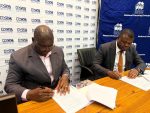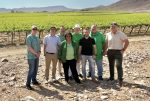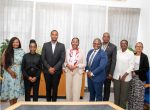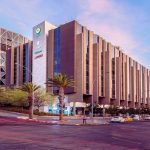A Southern African Development Community (SADC) backed natural gas infrastructure plan to bolster energy supplies allocates over N$45 billion ($2.5 billion) of the envisaged total of investment of N$320 billion ($17 billion) to Namibia, Business Express understands.
SADC endorsed the 15-year plan to coordinate resources, it said last week after a meeting between heads of state in Luanda, Angola’s capital. It focuses on the use of gas from northern Mozambique and southern Namibia, as well as import terminals in southern Mozambique and South Africa.
While Namibia will receive third largest investment, the plan allocates the bulk share of more than N$170 billion ($9 billion) of investment in Mozambique that’s needed to build power projects and infrastructure, leveraging discoveries offshore the north of the country. The second largest investment will be allocated to South Africa which will be more than N$65 billion ($3.5 billion).
The 16-member Southern African Development Community approved the blueprint to invest in infrastructure such as pipelines and terminals for local and imported supplies. While not yet a major source of gas, the bloc is home to some significant discoveries with projects in various stages in Mozambique, Tanzania and South Africa.
With new coal projects unlikely, nuclear power considered costly and climate change threatening hydroelectric generation, “this leaves few options,” according to the plan.
The plan still requires funding, at a time when the financing of fossil-fuel supplies grows increasingly challenging due to environmental concerns and a global shift to cleaner sources of energy.
Project delays could also present an obstacle, as demonstrated by liquefied natural gas projects by TotalEnergies SE and Shell Plc in the region that have fallen years behind their initial target to start production.
“SADC member states have growing populations and an urgent need to drive inclusive economic growth, reduce poverty and income inequality, and create prosperity and wellbeing for all,” the group said. Gas can provide a complementary source of energy, “expediting the development of the power grid in renewable resource rich areas,” it said.
Much of the blueprint relies on South Africa drafting a new energy road map, known locally as the Integrated Resource Plan, which includes regional gas supply. The nation, by far the biggest power consumer in the bloc, published its last IRP in 2019.
Namibia holds 2.20 trillion cubic feet (Tcf) of proven gas reserves as of 2017, ranking 58th in the world and accounting for about 0.032% of the world’s total natural gas reserves of 6,923 Tcf.
Additional reporting by Bloomberg










